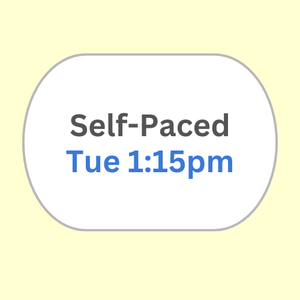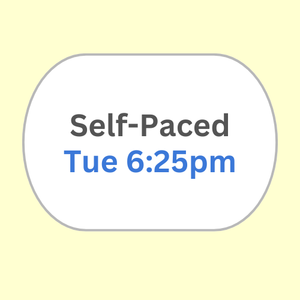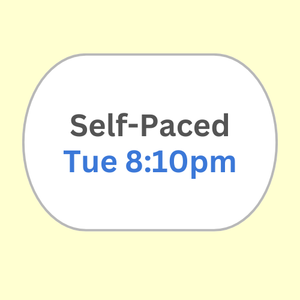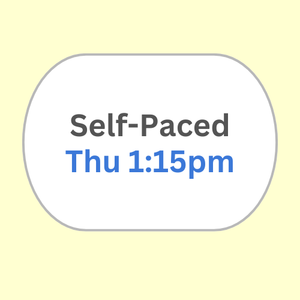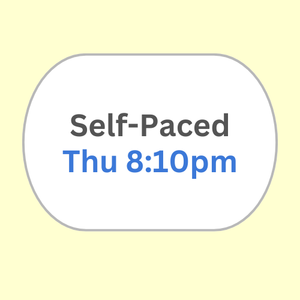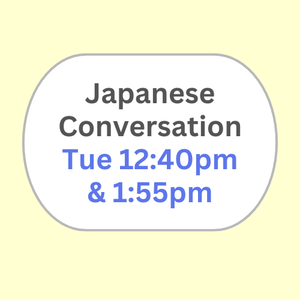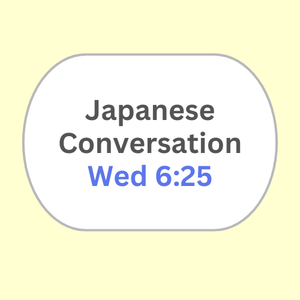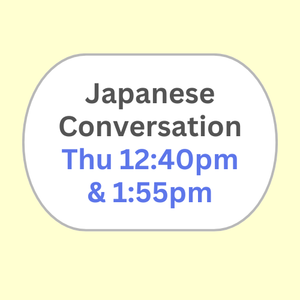Table of Contents
Who We Are
Beyond Language Learning
A Close-Knit Multilingual Community
Join us and become part of a vibrant community where Japanese and English learners teach and learn from each other.
Authentic and Immersive Practice
Experience genuine language practice with native Japanese speakers in our Japanese class providing endless opportunities for real-world application.
Supportive and Community-Centered
Embrace a relaxed, community-oriented approach to learning. Together, we support, grow, and share joyful moments, making every step of the journey enjoyable.
Follow us on Instagram!
Jump into the Japanese language without any pre-study with our laid-back and engaging class!
Designed for learning in a fun, stress-free environment, our Japanese Conversation class let us explore the language together, right from the get-go.
If your time is limited but you’re keen to start speaking Japanese, our casual conversation classes are just what you need.
Perfect for those who want to focus on practical speaking skills rather than reading, writing, or complex grammar, our sessions are geared towards helping you master essential phrases and understand the basics for everyday communication.
Our class not only emphasize correct pronunciation and the use of daily expressions but is also ideal for those planning to travel or live in Japan.
Plus, you’ll have the fantastic opportunity to participate in Language Exchange sessions with Japanese students learning English and gain exclusive access to our vibrant online learning community!
Get ready to speak Japanese with confidence and ease.
Join us today and start your journey to becoming a proficient speaker!
After Taking This Course
After taking Japanese Conversation class at Blue House Okinawa,
you’ll be able to say Japanese phrases below:
*Greetings
*Self-Introduction
Ex.
– Nice to meet you. / Hajime mashite, douzo yoroshiku.
– Are you Mr. Suzuki? / Suzuki san desuka.
– The office number is 090-1234-5678. / Kaisha no denwa bangou wa 090-1234-5678.
*Country, People & Language
Ex.
– Japan, Japanese People, Japanese Language / nihon, nihon jin, nihon go
*Occupations

*Directions to a Taxi Driver
Ex.
– To the Narita airport, please. / Narita kuukou made onegai shimasu.
– straight, right, left / massugu, migi, hidari
*Places
Ex.
– bank, post office, hospital, park / ginkou, yuubin kyoku, byouin, kouen
*Counting in Yen

*Place an Order at a Coffee Shop
Ex.
– A large coffee, please. / Ko-hi- L-saizu o hitotsu onegai shimasu.
*Ordering a Pizza on the Phone
Ex.
– My address is Miyagi 1-82, Chatan. / Juusho wa Chatan cho, Miyagi 1-82 desu.
*What Are They Saying at a Convenience Store?
Ex.
– Shall I put it in a bag? / Fukuro ni oire shimasuka.
– Is it ok just like this? (no bag) / Kono mama de yoroshii desuka.
– Shall I put chopsticks? / Ohashi o otsuke shimasuka.
*What Are They Saying at a Coffee Shop?
Ex.
– Are you ready to order? / Gochumon okimari deshitara douzo.
– Is it for here? / Kochira de omeshi agari desuka.
– Is it to go? / Omochi kaeri desuka.
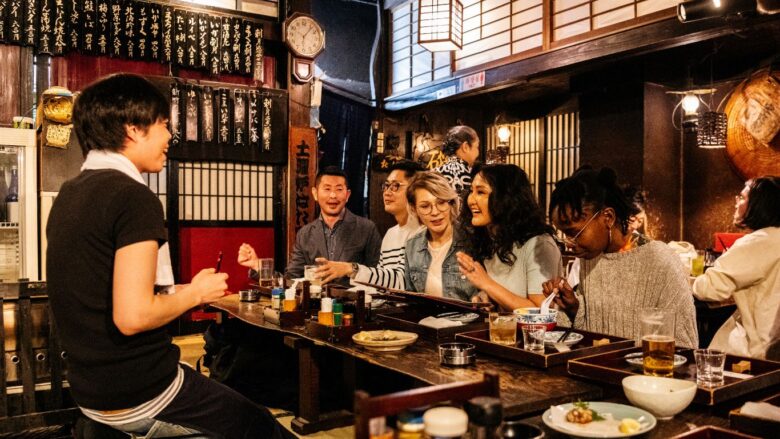
*Counting General Objects
Ex.
– one thing, two things, three things … / hitotsu, futatsu, mittsu…
*Ordering at a Restaurant
Ex.
– What is this? / Kore wa nan desuka.
– This is chicken curry. / Kore wa chikin kare- desu.
– Do you have beef curry? / Bi-fu kare- wa arimasuka.
*To Avoid Specific Ingredients
Ex.
– Are there any nuts in it? / Nattsu ga haitte imasuka.
– Can I have it without nuts in it? / Nattsu nashi o onegai dekimasuka.
– I’m allergic to nuts. / Nattsu arerugi- desu.
*Kanji Signs in Restaurants
Ex.
– open for business / 営業中 eigyou chu
– in preparation / 準備中 junbi chu
– regular holiday, closed / 定休日 teikyubi
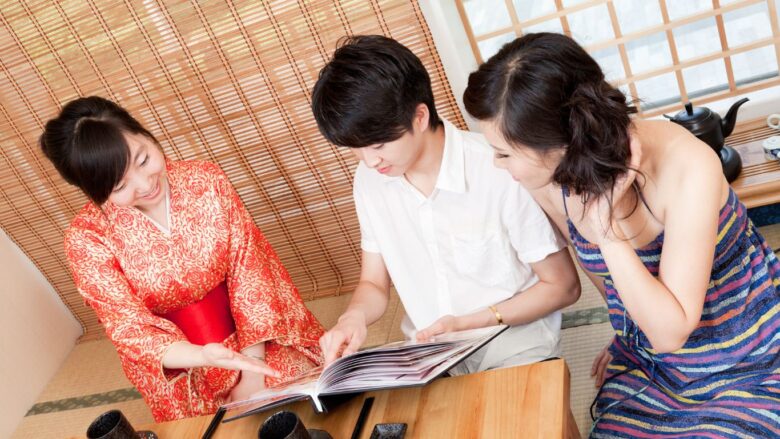
*Shopping
Ex.
– What is it? / Nan desuka.
– Where is it? / Doko desuka.
– How much is it? / Ikura desuka.
*Food and Ingredients Vocabulary
*Telling Time
Ex.
– 1 o’clock, 2 o’clock, 3 o’clock … / ichiji, niji, sanji …
– 1 minutes, 5 minutes, 10 minutes … / ippun, gofun, juppun
– What time is it? / Nan ji desuka.
*Asking for Business Hours
Ex.
– What time do you open? / Nanji kara desuka.
– What time do you close? / Nanji made desuka.
– When would be possible? / Itsu deki masuka.
*Days of the Week
*Months and Dates

*Taking Public Transportation
Ex.
– train, bullet train, airplane / densha, shinkansen, hikouki
– I go to the airport. / Kuukou ni ikimasu.
– Does this bus go to the airport? / Kono basu wa kuukou ni ikimasuka.
*Locations
Ex.
– in front of the airport / kuukou no mae
– nearby the train station / eki no chikaku
– to the right of the convenience store / konbini no migi
*At the Station
Ex.
– to get on shinkansen at Osaka / Osaka de shinkansen ni norimasu
– to change to JR at Kyoto / Kyoto de JR ni norikaemasu
– to get off at Gion / Gion de orimasu
*Asking for the Destination
Ex.
– Where does this go? / Kore wa doko ni ikimasuka.
– Does it go to the airport? / Kuukou ni ikimasuka.
– I go to the airport. / Kuukou ni ikimasu.

*Everyday Phrases
Ex.
– I eat sandwiches for lunch. / Hirugohan ni sandoicchi o tabemasu.
– I go to work at 7. / Shichiji ni shigoto ni ikimasu.
– I watch movies on my day off. / Yasumi no hi wa eiga o mimasu.
– I buy a new phone. / Atarashii keitai o kaimasu.
*Socializing
Ex.
– Why don’t we go together? / Issho ni iki masenka.
– Why don’t we have lunch together? / Issho ni hiru gohan o tabe masenka.
– Why don’t we have coffee together? / Issho ni ko-hi- o nomi masenka.
– Let’s go. / Iki masho.
– Let’s eat. / Tabe masho.
– Let’s drink. / Nomi masho.
*Describing Your Day
Ex.
– I went to the gym today. / Kyo jimu ni ikimashita.
– I had dinner. / Ban gohan o tabe mashita.
– I didn’t drink beer. / Bi-ru o nomi masen deshita.
– It was fun. / Tanoshi katta desu.
– It was delicious. / Oishi katta desu.
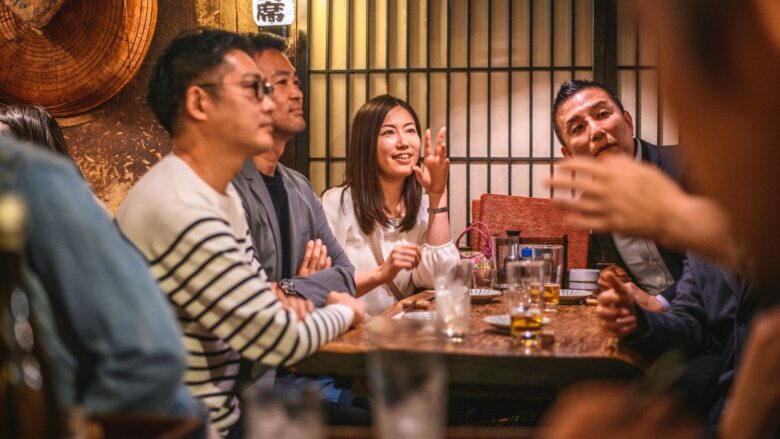
Japanese Manners & Etiquette
We’ll also learn about Japanese Manners & Etiquette too!:
*Dining Manners
– Bad Chopstick Manners
– Manners for Eating Sushi
– Manners for Sushi-Go-Around
– Manners for Eating Noodles
– Manners for Eating Tempura
– Manners at Izakaya; Japanese-Style Bar
– How to Pour Japanese Sake and Shochu
– Manners for Eating Ramen
– How to Make Your Own Onigiri
– Manners for Eating Japanese Confectionery
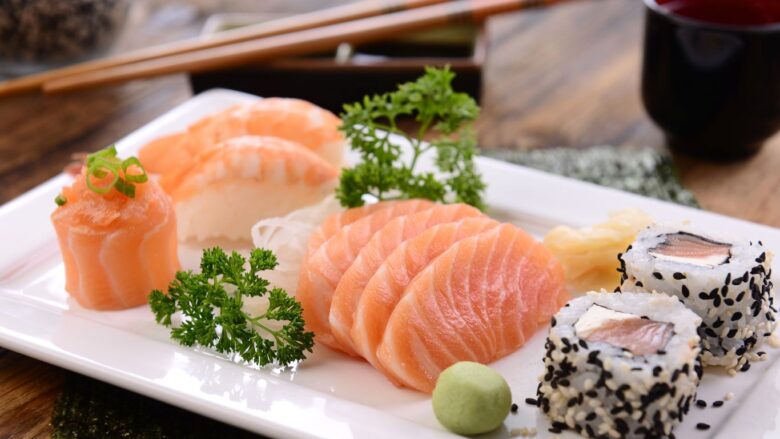
*Manners for Staying and Visiting
– How to Drink Japanese Tea
– How to Make Your Own Japanese Tea
– Manners at Ryokan; Japanese-Style Hotels
– How to Wear a Yukata; Japanese-Style Summer Kimono
– Manners at Hot Springs
– How to Take a Public Bath
– Staying at a Japanese Temple/Shrine
– Manners for a Japanese House Visit
– Manners for Giving a Gift
– Manners for Visiting Japanese Temples and Shrines
– How to do Zazen; Japanese Meditation

*Understanding Japanese Culture
– Japanese Gardens
– How to Spot a Good Bonsai
– Japanese Castles
– Japanese Festivals
– Manners at Japanese Cherry Blossom Viewing Visit
– Kabuki, Noh, Kagura, Gagaku, Bunraku; Japanese Culture
– Kimono; Japanese Traditional Formal Dress
– Kimono Manners
– Sado; Japanese Tea Ceremony
– Kado; Japanese Flower Arrangement
– Shodo, Haiku; Japanese Literature
– Ukiyoe; Japanese Art
– Budo; Japanese Martial Arts
– Origami
– Annual Events in Spring
– Annual Events in Summer
– Annual Events in Autumn
– Annual Events in Winter
– Japanese New Year
– Japanese Shinto-Style Wedding
– Japanese Funeral
– Greeting in Japanese

Practice in Class
Listening and Speaking Practice with Native Japanese Speakers in Language Exchange
It immerses you in the language’s natural rhythm, intonation, and cultural nuances, making learning authentic and engaging.
This direct interaction boosts your listening comprehension and speaking fluency, allowing you to pick up colloquial expressions and slang.
Moreover, it builds confidence in real-world communication and fosters a deeper understanding of Japanese culture.
These exchanges are a crucial part of mastering the language in a way textbooks alone cannot provide.
Ask Native Japanese Speakers the Questions
This immersive experience helps learners grasp nuanced pronunciations, understand colloquial expressions, and become familiar with cultural contexts, improving listening and speaking skills.
It encourages active learning through real-time feedback, helping to correct mistakes and clarify doubts immediately.
Engaging with natives also boosts confidence in using the language in everyday scenarios, making the learning process more enjoyable and effective.
Overall, it’s a direct, practical approach to mastering Japanese, making it easier to think and communicate fluently in the language.
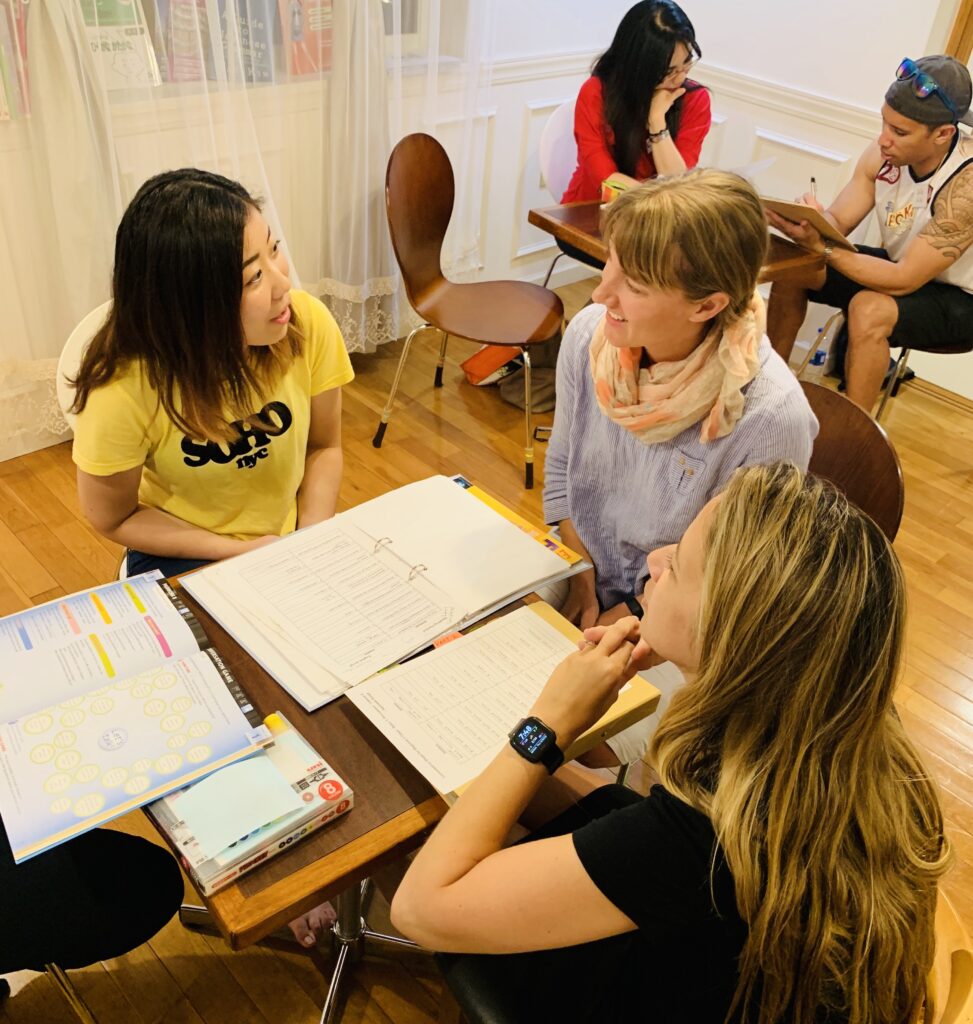
Even More Practice!
Ask native Japanese speakers questions on Blue House Okinawa App/Website
You asked for more ways to practice Japanese, and guess what?
We’ve got you covered with our very own app, made for you amazing students! 🌟
Now you can flex your language muscles anytime, anywhere—whether you’re chilling at home, on your daily commute, or just scrolling through your phone with some time to spare.
Dive into the app and you’ll find all sorts of fun ways to keep up with your Japanese studies.
Post, comment, slide into DMs, and do everything you need to boost your language skills.
Plus, you get to support our awesome local Japanese friends who are learning English, just like in our Language Exchange program at school.
Feeling a bit shy about your Japanese?
Pop into the Living Room to ask if your Japanese hits the mark, or lend a hand (and your English skills) to help local students master English with your comments and posts.
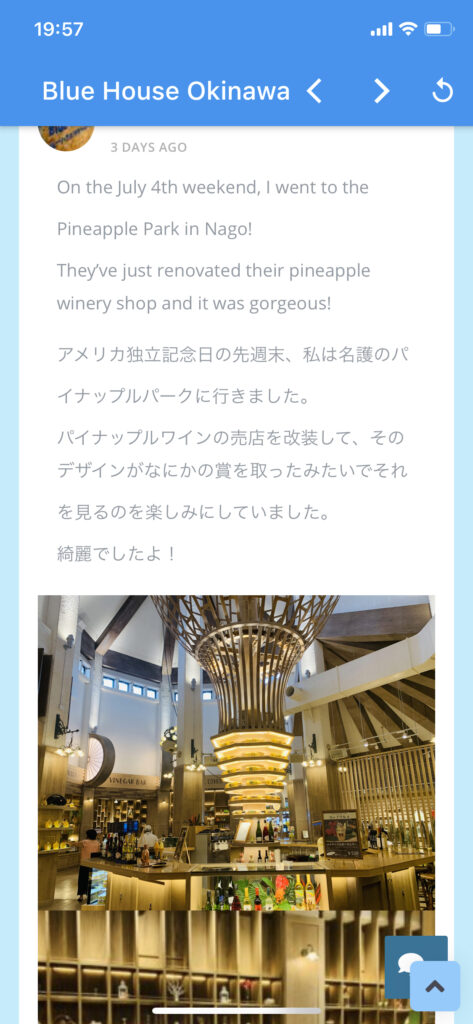
Host a Study Exchange
Want to try out your Japanese?
Or, do you like to practice your listening and speaking?
Then, host a Study Exchange and study with local Japanese friends!
At the Study Exchange, you can:
*see if you remember what you’ve learned.
*see if your Japanese friends understand your Japanese.
*listen to native Japanese speakers’ Japanese pronunciation.
*learn how native Japanese speakers use Japanese.
*understand what your Japanese friends think, how they look at things, and how they express their feelings.
*understand Japanese culture on a deeper level.
Sounds so exciting, right?
Oh after the Study Exchange, don’t forget to post the report for your review!
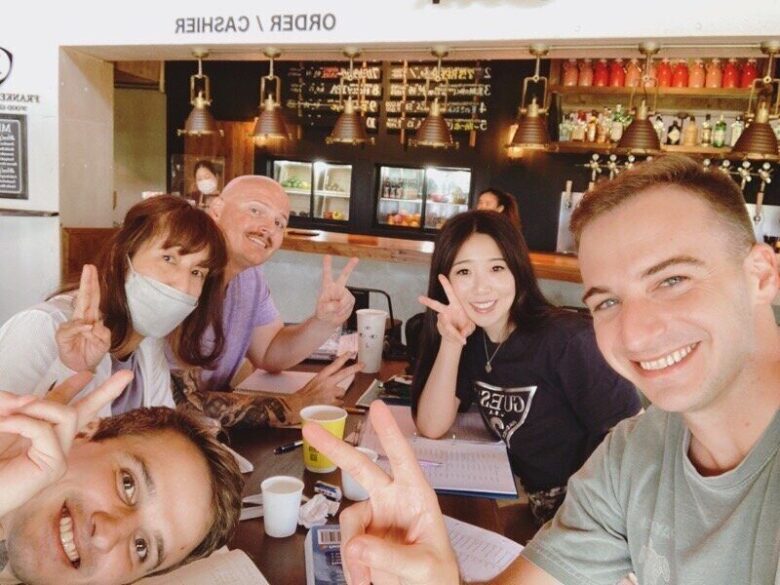
Our Payment Methods
At Blue House Okinawa, we provide two tailored payment options to suit various needs and learning styles across different class settings. Whether you prefer an intensive learning environment or require flexibility to accommodate a busy schedule, we have the ideal class for you. Below, we outline the key differences between our Flexible Class and Regular Class.
Flex Class (Flexible Schedule)
In the Flex Class, you can purchase as many coupons as you’d like, then book and attend lessons at your convenience.
You can:
- Purchase the desired number of coupons each month and use them to book ANY LESSONS YOU LIKE.
- Coupons are valid only for the current 4-week subscription period and cannot be carried over to the next 4-week subscription period.
- Book lessons online, anytime and from anywhere.
- Easily reschedule your lessons if needed.
- Start learning now!
Regular Class
In the Regular Class, your class, schedule, and tuition are fixed. This helps you build a consistent Japanese study habit.
You can:
- Develop a steady and consistent study routine.
- Attend 8 lessons per month at a lower cost compared to the Flex 8 plan.
- Follow a fixed class schedule, attending the same class at the same time each week.
- Pay a fixed tuition fee, it covers one month/term regardless of your attendance.
- Rescheduling or make-up lessons for missed classes are NOT AVAILABLE.
- Begin the class at the start of each month.
For more details, please see the information below.
Flexible Schedule Class
Discover the Ultimate Flexible Schedule Class
In today’s fast-paced world, balancing work, studies, and family commitments can be challenging. Our Flexible Schedule Class is designed for busy individuals, those traveling from afar, and anyone who prefers online learning. This hybrid class offers the best of both worlds, allowing you to tailor your education to fit your lifestyle seamlessly. You can purchase coupons and book your lessons at your convenience, making it perfect for those with busy schedules.
Why Choose Our Flexible Schedule Class?
1. Pay Only for the Lessons You Attend
Like to attend Japanese classes but can’t commit to a weekly schedule? Then our Flex Class system is perfect for you. Simply purchase coupons and book lessons as they fit your schedule. You only pay for the lessons you actually attend, ensuring there’s no wasted money!
2. Create Your Own Lesson Schedule
With the Flex Class system, you have complete control over your schedule. Whether you want to focus intensively on studying Japanese by attending multiple classes each week or prefer a lighter schedule, you can customize your learning to match your availability. This flexibility allows you to balance personal and professional commitments while continuing your studies.
3. Buy as Many Coupons as You Need
You can purchase as many coupons as you like, depending on your goals and availability. If you’d like to dedicate more time to your Japanese studies, buy more coupons. If you have a busy month, you can buy fewer. It’s entirely up to you!
4. Easy to Continue
The flexibility of our Flex Class system makes it easier to continue your learning journey without interruptions. As your schedule changes, you can adjust your lessons accordingly, ensuring consistent progress. This adaptability is ideal for those with unpredictable commitments.
5. Coupons Can Be Used for Any Class
Your Flex Class coupons can be used for any class, whether it’s a self-paced beginners Japanese class or a Japanese conversation class. For example, with 8 lessons, you can attend 4 beginner classes and 4 conversation classes—or mix and match however you like!
6. Book Lessons Anytime, Anywhere
With our easy online booking system, you can book your lessons from anywhere at any time. You can book lessons as early as 1 hour before or up to 4 weeks in advance, making it convenient for even the busiest of schedules.
7. Easily Reschedule Lessons
If you need to cancel a lesson, you can do so up to 24 hours in advance, and your coupon will be available for another booking. This flexibility ensures that even with an irregular schedule, you can continue learning without stress.
8. Start now!
No need to wait for the start of a new term. With our Flex Class, you can begin your lessons and start using our online program and resources as soon as you sign up. Whether you’re eager to start immediately or prefer to plan ahead, our system lets you jump into learning right away.
9. Switch to Regular Classes Anytime
If your schedule changes and you have more time to dedicate to your studies, switching from our Flex Class to our Regular Classes is easy and can be done online. You can also adjust your class level or add another class after completing your current one. Our system is designed to grow with you!
Flexible Schedule Class Tuition
Registration Fee 11,000 yen
Class Materials
Japanese Conversation: 7,200 yen
Beginners Japanese 1 & 2: 7,700 yen
Beginners Japanese 3 & 4: 7,700 yen
Pre-Intermediate Japanese 1: 6,600 yen
Pre-Intermediate Japanese 2: 6,600 yen
Pre-Intermediate Japanese 3: 6,600 yen
JLPT Prep N5: 6,600 yen
JLPT Prep N4: 8,800 yen
JLPT Prep N3: 11,000 yen
*The registration fee and the class materials are required for a new student and each student.
Tuition Subscription Renewal Date
The subscription renewals monthly on the date you signed up. You can cancel the subscription at any time as needed.
Lesson Booking Policy
-You can book a lesson from 1 hour to 5 weeks before the lesson in advance.
-Your coupon will be available for use from the day your subscription renews for up to 4 weeks.
-Please note that the coupon cannot be carried over to the next 4-week subscription period.
-Coupons are displayed on the payment page and can be used by selecting them.
Lesson Cancellation Policy
-Cancellations made more than 24 hours before the scheduled lesson:
Your coupon will be reactivated and can be used to book another lesson.
Cancellations made within 24 hours before the scheduled lesson:
Your coupon will be forfeited and cannot be used for future bookings.
Please send your instructor a message on Living Room and let him/her know when you cancel a lesson within 24 hours before the scheduled lesson.
Class Cancellation Policy
-You may cancel your class, provided the coupon hasn’t been used.
-Cancellations made within 5 days of payment: 90% refund.
-Cancellations made more than 5 days after payment: No refund.
Upon cancellation of your subscription, access to lesson booking coupons, and online materials will be discontinued.
Flexible Schedule Class Tuition
– Self-Paced Class is for Beginners Japanese 1 – 4, Pre-Intermediate Japanese 1 – 3 and JPLT Prep.
– You can purchase coupons as many as you like and book your lessons at your convenience. Choose from the following options.
- Flex 1 ¥ 6,100
6,100 Yen/Lesson - 1 lesson a month.
- Flex 2 ¥ 11,000
5,500 Yen/Lesson - 2 lessons a month.
- Flex 3 ¥ 14,800
4,933 Yen/Lesson - 3 lessons a month.
- Flex 4 ¥ 18,500
4,625 Yen/Lesson - 4 lessons a month.
- Flex 6 ¥ 26,400
4,400 Yen/Lesson - 6 lessons a month.
- Flex 8 ¥ 33,400
4,175 Yen/Lesson - 8 lessons a month.
- Flex 10 ¥ 39,600
3,960 Yen/Lesson - 10 lessons a month.
- Flex 12 ¥ 46,200
3,850Yen/Lesson - 12 lessons a month.
- Flex 16 ¥ 59,800
3,738 Yen/Lesson - 16 lessons a month.
Register today to save your spot!
*Display price is a price for per lesson.
How to Book a Lesson
Once you sign up for the Flex class, you can start booking your lessons as below.
Your coupon will be applied on the checkout page.
Lesson Booking Policy
– You can book a lesson from 1 hour to 5 weeks before the lesson in advance.
– Your coupon will be available for use from the day your subscription renews for up to 4 weeks.
– Please note that the coupon cannot be carried over to the next 4-week subscription period.
– Coupons are displayed on the payment page and can be used by selecting them.
Check lesson availabilities below.
How to Cancel the Lesson
After booking a lesson, you can cancel it here if needed here.
*You need to be a student to access your account page.
*Lesson Booking Cancellation Policy
– Cancellations made more than 24 hours before the scheduled lesson:
Your coupon will be reactivated and can be used to book another lesson.
– Cancellations made within 24 hours before the scheduled lesson:
Your coupon will be forfeited and cannot be used for future bookings.
– Please send your instructor a message on Living Room and let him/her know when you cancel a lesson within 24 hours before the scheduled lesson.
Regular Class
Intensive Learning with a Fixed Schedule
Our Regular Class is perfect for those committed to mastering Japanese. Attend classes weekly on the same days and times, ensuring a consistent and reliable routine. Benefit from regular, focused practice, immediate feedback from experienced instructors, and interaction with dedicated peers. This structured approach helps you stay disciplined, making steady progress towards fluency.
Why Choose Our Regular Class?
1. Easy to Build Study Habits
With a fixed schedule, it’s easier to build and maintain your study habits. Attending classes on the same days and at the same times each week helps integrate learning into your routine, making it a regular part of your life.
2. Accelerate Your Progress
Join our Regular class and attend lessons weekly to fast-track your language learning journey. Regular attendance not only enhances your understanding of the Japanese language but also speeds up your progress, helping you achieve your goals faster and more effectively.
3. Improve Listening and Speaking Skills Faster
Frequent classes enhance your Japanese listening and speaking skills more quickly too. Engaging in regular conversations with native Japanese speakers and receiving direct feedback from instructors improve your practical communication abilities.
4. Cost-Effective
The Self-Paced Regular Class is more cost-effective compared to taking eight/four Flexible Schedule lessons. This makes it an economical choice for those looking to maximize their learning within a budget.
5. Switch to Flex Class Anytime!
When you sign up for a Regular Class, you have the freedom to switch to a Flex Class anytime in the future. Changing your class is easy and can be done online with just a few clicks. Enjoy the flexibility to choose the learning style that best suits your needs!
Regular Class Tuition
Registration Fee 11,000 yen
Class Materials
Japanese Conversation: 7,200 yen
Beginners Japanese 1 & 2: 7,700 yen
Beginners Japanese 3 & 4: 7,700 yen
Pre-Intermediate Japanese 1: 6,600 yen
Pre-Intermediate Japanese 2: 6,600 yen
Pre-Intermediate Japanese 3: 6,600 yen
JLPT Prep N5: 6,600 yen
JLPT Prep N4: 8,800 yen
JLPT Prep N3: 11,000 yen
*The registration fee and the class materials are required for a new student and each student.
Regular Class
–Follow a fixed class schedule, attending the same class at the same time each week.
-Pay a fixed tuition fee, it covers one month/term regardless of your attendance.
-Rescheduling or make-up lessons for missed classes are NOT available.
-Begin the class at the start of each month.
Tuition
– Early Bird Discount
The payment for the upcoming term or month by the 20th of the preceding month are eligible for a 20% early bird discount.
– 2 Payment Methods
There are two payment methods available.
By Term: Covering a 2-month period.
By Month: Covering a 1-month period.
– Tuition Subscription Renewal Date
The subscription renews on the 20th of the preceding month. You can cancel the subscription at any time as needed.
Class Cancellation Policy
-90% refund for cancellation greater than 7 days prior to the 1st day of class
-50% refund for cancellation 1-7 days prior to 1st day of class
-NO refunds for cancellation after the 1st day of class
Register at least 1 day prior to the 1st day of class. If a class is already in session, please wait until the next term starts to register.
2025 School Calendar
Winter
Winter Break : 20 Dec ‘24 – 6 Jan ‘25
January : 7 Jan – 30 Jan
February : 4 Feb – 27 Feb
March : 4 Mar – 27 Mar
Spring
Spring Break : 28 Mar – 7 Apr
April : 8 Apr – 1 May
May : 6 May – 29 May
June : 3 Jun – 26 Jun
Summer
Summer Break : 27 Jun – 7 Jul
July : 8 July – 31 July
August : 5 Aug – 28 Aug
September : 2 Sep – 25 Sep
Fall
Fall Break : 26 Sep – 6 Oct
October : 7 Oct – 30 Oct
November : 4 Nov – 27 Nov
December : 2 Dec – 25 Dec
Winter Break : 26 Dec ‘25 – 5 Jan ‘26
Self-Paced Regular Class Tuition
– Self-Paced Class is for Beginners Japanese 1 – 4, Pre-Intermediate Japanese 1 – 3 and JPLT Prep.
– This class meets twice a week.
- By Term with Early Bird Discount ¥ 55,400
The payment for the upcoming term by the 20th of the preceding month.
- By Term with Regular Price ¥ 66,500
The payment for the upcoming term after the 20th of the preceding month.
- By Month with Early Bird Discount ¥ 27,700
The payment for the upcoming month by the 20th of the preceding month.
- By Month with Regular Price ¥ 33,900
The payment for the upcoming month after the 20th of the preceding month.
Japanese Conversation Class Tuition
– This class meet once a week.
– Tuition Subscription Renewal Date
The subscription renews on the 20th of the preceding month. You can cancel the subscription at any time as needed.
- By Term with Early Bird Discount ¥ 27,700
The payment for the upcoming term by the 20th of the preceding month.
- By Term with Regular Price ¥ 33,900
The payment for the upcoming term after the 20th of the preceding month.
- By Month with Early Bird Discount ¥ 15,400
The payment for the upcoming month by the 20th of the preceding month.
- By Month with Regular Price ¥ 18,500
The payment for the upcoming month after the 20th of the preceding month.
Register today to save your spot!
- Sale!

Japanese Conversation
¥15,400 – ¥18,500Select options This product has multiple variants. The options may be chosen on the product page
Both the Regular Class and the Flexible Schedule Class offer unique benefits tailored to different needs. The Regular Class provides a structured environment that helps build consistent study habits, ensures faster progress, and improves practical language skills. On the other hand, the Flexible Schedule Class offers convenience and flexibility, allowing you to learn at your own pace, pay only for the lessons you take, and start immediately.
No matter which class you choose, you will receive high-quality instruction and support from our experienced teachers. Our goal is to provide you with the tools and resources you need to succeed in learning Japanese, whether you prefer a regular schedule or require the flexibility to fit learning into a busy life.
Join Us Today!
Don’t let a busy schedule or distance stop you from learning Japanese. Choose the class that best fits your needs and start your journey with us. Our flexible and regular classes are designed to accommodate your lifestyle and help you achieve your language learning goals.
How to Start
Here are the easy steps to get you started with your Japanese Conversation class.
1. Please take a moment to review our cancellation policy on the registration page.
2. Go ahead and sign up for the class.
3. Complete the online orientation. Don’t worry, we’ll send you the link automatically once you’ve registered.
4. Familiarize yourself with our student agreement and house rules.
5. Register and set up your profile on our school social media.
6. Install and set up the Japanese keyboard on your devices.
7. Introduce yourself on our school social media to connect with your classmates.
8. Once you’ve completed all the steps, drop us a message in the Living Room.
We’re excited to have you join us and can’t wait to see you in class!
As our Japanese conversation class comes to a close, you’ll make remarkable strides in your speaking and comprehension skills.
This journey will equip you with practical language tools and confidence to engage in conversations with native speakers.
We hope the real-life scenarios and interactive sessions inspires you to continue practicing and exploring the nuances of Japanese.
Keep building on this foundation—practice regularly, stay curious, and seek opportunities to converse in Japanese.
Your progress is a testament to your dedication, and with continued effort, you’ll find your fluency ever improving. Keep up the great work!
Who We Are
Beyond Language Learning
A Close-Knit Multilingual Community
Join us and become part of a vibrant community where Japanese and English learners teach and learn from each other.
Authentic and Immersive Practice
Experience genuine language practice with native Japanese speakers in our Japanese class providing endless opportunities for real-world application.
Supportive and Community-Centered
Embrace a relaxed, community-oriented approach to learning. Together, we support, grow, and share joyful moments, making every step of the journey enjoyable.
Follow us on Instagram!









